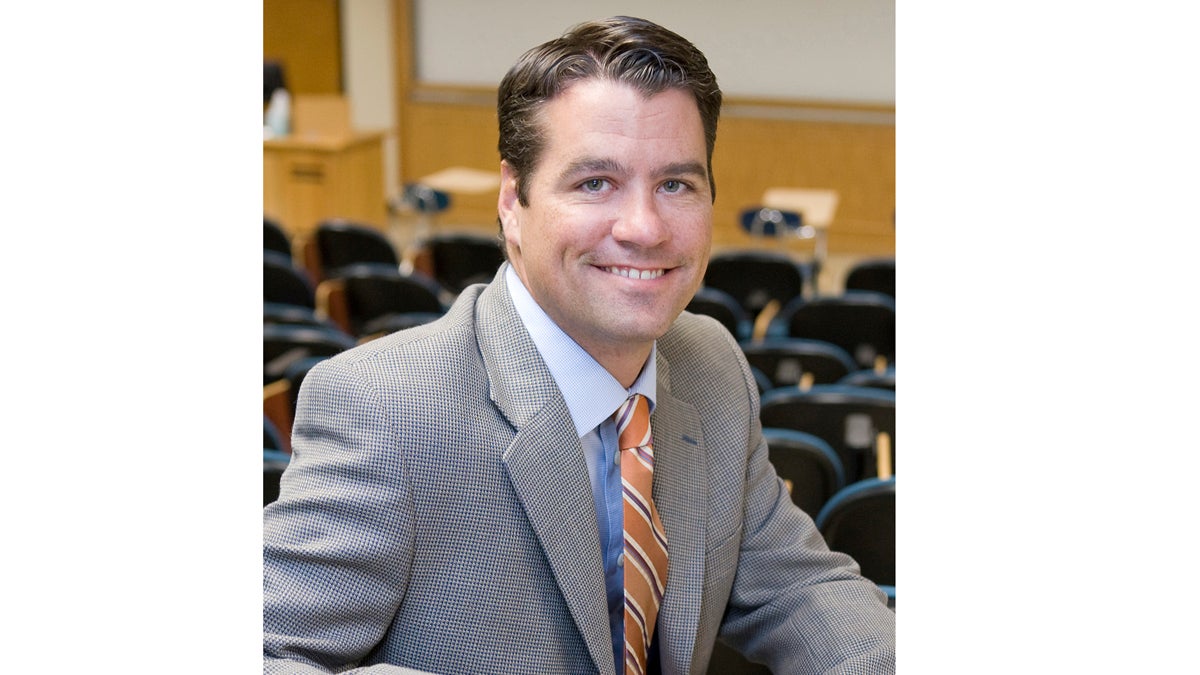Drivers with autism report problems, self-restrictions in Drexel pilot study
Listen
Drexel University professor and researcher Brian Daly found drivers with autism report much higher levels of problematic driving behaviors than a control group. (Photo/ Drexel University)
A pilot study out of Drexel University surveyed 78 people with autism about their comfort behind the wheel, and found a big difference in driving behaviors between drivers with autism and the control group.
“The autism spectrum group was reporting much higher levels of problematic driving behaviors,” said assistant professor of psychology and lead researcher Brian Daly.
Those problems included more mistakes and led to more tickets. This could mean “failing to put on your turn signals when merging into another lane, and lapses such as failing to yield when merging onto highways,” said Daly. Drivers with autism also restricted their driving more.
“The self-restrictions that people reported would be things like driving at night time or not driving on a highway,” said Daly.
Previous studies, including one from the Children’s Hospital of Pennsylvania in 2012, have focused on observational data related to young drivers with autism – but asking adults what they think and feel is new. Daly said this study is novel on two additional counts — it asked drivers with autism to self-report their behavior, and it looked at the holistic experience of driving, rather than narrower capacities implicated in driving, such as spatial reasoning.
Dr. Flaura Koplin Winston, scientific director of the Center for Injury Research and Prevention at CHOP, said this study adds to an important knowledge base for everyone on the road.
“Each driver has unique needs, especially those with developmental differences. We need to tailor our approaches to safe driving, so that we can provide the right interventions, for right person at right time,” Winston commented by email.
‘Light is like someone screaming in my ear’
Brent White, a member of the Autism Self-Advocate Network, said he has been driving for 40 years, but that he gave up his car seven years ago and now relies more on walking and public transit.
“I’m less inclined to drive now because, sensory-wise, it’s gotten a lot more complicated,” said White, 56. “With sensory things, I see everything that goes on and I hear everything that goes on. There’s no way to select what I look at.”
He says certain stimuli — including bright lights and noise — are too much to handle.
“Light to me is like someone screaming in my ear,” he said. “And the way headlights are on cars, it’s like a megaphone in my ear. It physically hurts.” So, White says he doesn’t drive at night anymore.
He also never learned to parallel park. “I can’t parallel park. I can’t go backwards because things that are backwards don’t make sense,” said White. “I would rather park three miles away than parallel park in front of my building.”
White didn’t always restrict his driving so much. When he was younger, he said driving provided him with an oasis.
“It gave me some clean solitude space. It’s lovely in that sense,” said White. And driving did help him fit, especially as a teenager.
“When I was a kid, driving was normal, and I was trying very hard to be normal,” said White. “I was having enough trouble fitting in and driving was super important.”
But he drove slowly and used caution – and never got a ticket. “You know those cartoons of old people with their hands up on the steering wheel? That was me,” said White.
Most with autism don’t drive
A study by the University of Virginia from 2010 found that about 80 percent of those with autism relied on friends and family for transportation. Another study, also from 2010, out of Rutgers University showed that 24 percent of adults with autism drive independently. That number is 75 percent in the general population.
Ultimately, research on driving by people with autism aims to impact policies and supports to bolster quality of life – and independence – for people with autism.
“Driving is central in everyone’s life to things like community involvement, vocational opportunities, social relationships and quality of life,” said Daly.
White’s experience supports this statement. “[No longer driving] limits the places I can go.”
Daly will continue this research by next comparing drivers with autism to a control group on a driving simulator. He’s received funding from the Autism Institute at Drexel for the project.
Until then, there is a possibility that drivers with autism aren’t actually worse – maybe they’re just more honest. “One possible interpretation of this data is that individuals with ASD [autism spectrum disorder] are more honest in their responses to this survey,” said Daly. “We know that normal drivers tend to report to be more responsible drivers than they actually are.”
WHYY is your source for fact-based, in-depth journalism and information. As a nonprofit organization, we rely on financial support from readers like you. Please give today.

